the essential womens guide for
achieving equality, health, and success
National Council of Womens Organizations
Introduction byMartha Burk,
Chair of the National Council of Womens Organizations
Inner Ocean Publishing, Inc.
Maui, Hawaii  San Francisco, California
San Francisco, California
Inner Ocean Publishing, Inc.
P.O. Box 1239
Makawao, Maui, HI 96768-1239
2005 by National Council of Womens Organizations
All rights reserved. No part of this book may be reproduced by any means or in any form whatsoever without written permission from the publisher.
Cover design by Laura Beers
Book design by Maxine Ressler
PUBLISHER CATALOGING-IN-PUBLICATION DATA
National Council of Womens Organizations
50 ways to improve womens lives : the essential womens guide for achieving equality, health, and success / National Council of Womens Organizations ; introduction by Martha Burk.1st ed.Maui, Hawaii : Inner Ocean, 2005.
p.;cm.
ISBN: 1-930722-45-1
l. Women Social conditions. 2. Women Health and hygiene. 3. Womens rights. 4. Feminism. 5. Self-realization in women. 6. Women Psychology. I. Title. II. Fifty ways to improve womens lives.
HQ1233.F54 2005
Printed in the United States of America on recycled paper
05 06 07 08 09 10 DATA 10 9 8 7 6 5 4 3 2 1
Distributed by Publishers Group West
For information on promotions, bulk purchases, premiums, or educational use, please contact 866.731.2216 or sales@innerocean.com.
To all the leaders and activists, women and men, who
work to improve womens lives.
Special thanks to all of our contributors, publisher
Karen Bouris, editor Angela Watrous, and NCWO
consultant Mal Johnson, who are helping us to reach
out to women everywhere.
Contents
Introduction Martha Burk,
Chair of the National Council of Womens Organizations
Value Diversity and Promote Cultural Understanding
Kiran Ahuja
Address the Unique Needs of Immigrant Women
Hilda L. Solis
Afterword: Women at the Global Decision-Making Table
Madeleine K. Albright
Youve taken the first step: you have picked up this book. We hope it will be the first of many steps on your path to enacting change for women in your personal life, in your community, and in the world at large.
The book is brought to you by the National Council of Womens Organizations (NCWO), the nations largest and oldest coalition of womens groups with over 200 organizations collectively representing ten million women. We work on all aspects of progress for women from equal pay, domestic violence, and child care to reproductive rights, political leadership, and global equality. Our groups are diverse: some have thousands of members; some produce research; some defend womens rights through legal means; some offer direct services to women. We work on different issues, yet we all have one desire: to see progress for women. We know you share that goal, and we hope this book can provide a blueprint to invigorate your interest, commitment, and creativity.
As chair of the NCWO, in May of 2004, I was asked by the All-China Womens Federation to come to China and deliver a speech to their members. My topic was The State of Women in the United States. Easy enough, I thought, until I sat down to write and realized that there were many ways I could approach the subject. I could discuss how women in this country are doing in comparison to women in China or to women worldwide. Or I could talk about how American women compare to American men socially, economically, and politically. Still another approach would be to compare American women today to American women at the turn of the 20th century, before we even had the vote. Or I could focus on the current state of U.S. women compared to an ideal where we would be if we could indeed have it all.
Depending on the angle I chose, I could make a compelling and valid case that were doing very well, pretty well, or not so good. Were either headed in the right direction or were losing ground. From my perspective as a leader in the womens movement, Ive come to believe that its important to view the issues from all vantage points: we must look at the losses weve suffered alongside the enormous gains we made in the 1960s and 1970s. Yes, weve achieved parity with men in obtaining college degrees, but politicians have recently tried to weaken the law guaranteeing equal educational opportunities for girls. While we have achieved equal access to credit, as well as pregnancy leave and the right to seek any job, were still lagging behind men in how much were paid, and that gap is widening. Our right to control our reproductive lives, a hard-fought battle won in the Supreme Court in 1973, is now one judicial appointment away from being overturned. Our standard of living is high, but adult women still comprise the majority of minimum-wage workers. And finally, we have universal health care for retirees, but elderly women are the largest group living in poverty.
I stressed in this speech that we must all play an active role in protecting the progress weve made and that we must work hard to improve the lives of women even more. When my address ended, one of the American delegates came up to me and made a simple but profound request: Just tell me ten things that I personally can do to make change, she said. And with that, I saw that there was a great need for a book such as this. A book that could speak to women who werent policy experts or traveling to conventions in China but who were living the issues that we speak so passionately about. And instead of 10 ideas, were suggesting 50 to give you something to chew on.
We have gathered 50 leading experts to describe the issues and to offer concrete, doable things to help, no matter how much or little time you have to dedicate to these causes at any given moment. Weve taken a varied approach on the issues that most impact the quality of your and other womens lives. Some essays, such as Treat Your Body Well and Make Child Care a National Priority, examine the personal concerns that affect our daily lives. Other essays, such as Wage Peace around the World and Madeleine Albrights afterword Women at the Global Decision-Making Table look at womens lives through a global lens. Still others, such as Demand Pay Equity and Nourish Womens Ambitions, point to specific areas where American women are not being afforded the same opportunities as American men. In the essay Equalize Constitutional Rights, we learn how the work started by our foremothers still needs our attention. And last but certainly not least, in essays like Celebrate Womens Achievements, we learn how to support the ideals that will inspire us to keep moving forward, even when the odds seem stacked against positive change.
Weve grouped the essays into sections to illustrate the particular interconnections among certain issues. We start with the section Do It for Your Health, because without good health for ourselves, our loved ones, and our planet, we cant accomplish much in other areas. Section 2, Practice Real Family Values, lays out how to achieve safety and security for our homes and our communities. In section 3, Grow Your Money, Grow Your Mind, the essayists recommend ways to strengthen womens educational opportunities and economic security. While the idea that women belong in a political body is no longer novel, neither has belonging been entirely realized so section 4, Lead the Way, shows us how to support women in the realms of media, politics, the military, and other fields that redefine national priorities. Because our girls are the hope for future progress, section 5, Forge a Path for the Next Generation, discusses a variety of ways in which older women can act as mentors and younger women can make new paths to progress. In section 6, Build the Community You Want to Live In, the authors speak frankly about the walls that divide us, and how we can break down prejudices and work together. And finally, section 7, Reach for the World, examines how U.S. women can help protect the human rights of women worldwide.



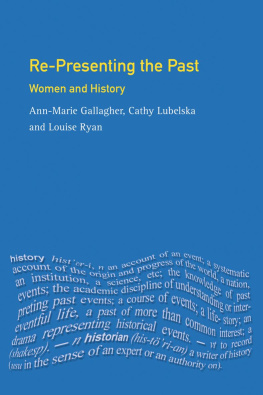
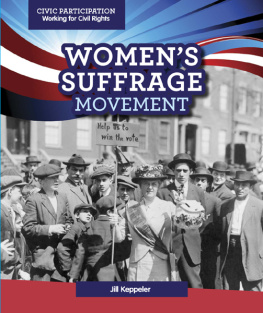
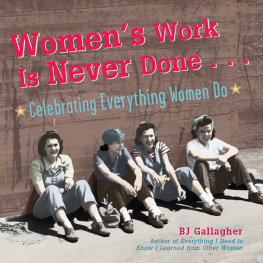
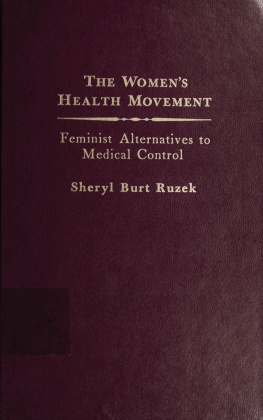
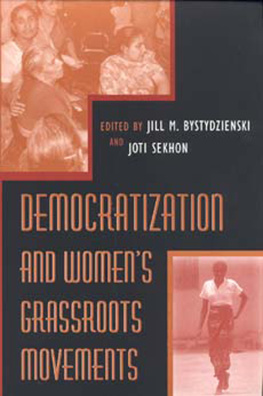


 San Francisco, California
San Francisco, California